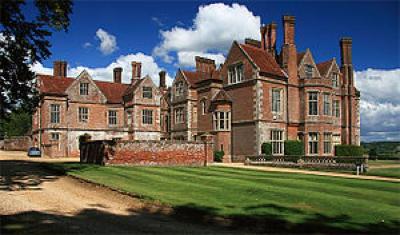English Recipe Book, inscribed D: R: 1780
View Online
[Library Title: [Recipe book] [manuscript].]
[Library Title: [Recipe book] [manuscript].]
Manuscript Location
University of Pennsylvania Libraries, Kislak Center for Special Collections - ManuscriptsHolding Library Call No.
UPenn Ms. Codex 876Manuscript Cookbooks Survey Database ID#
145Place of Origin
EnglandDate of Composition
1780Description
This collection is inscribed "Reciepts D: R: 1780" on the inside front cover. It consists of approximately 40 pages of recipes, most of which are written on the rectos of the leaves, at the front, and a handful of recipes written from the back of the notebook, upside down in relation to the front. All of the recipes in the front are in the hand of the inscriber except for the final three, beginning on leaf 30r. The recipes in the back are in several different hands, including that of the inscriber.The interest of the collection lies in the recipes written by the inscriber at the front of the volume, which are about two-thirds culinary and one-third medical and household. The volume has an unusual practical slant that carries over into the culinary recipes, many of which outline preserved or long-keeping foods. Some of these are commonplace in cookbooks of this period, such as collared pig's head, hams, dried apples, damson cheese, and orange marmalade. But many are unusual, including "Cucumber Catchup" (leaf 1r), "Sugar Vinegar" (leaf 2r), "Gravy to keep for ever" (in cups sealed with fat, leaf 13r), "Cakes to keep a year" (not that they likely would, leaf 16r), "Black Puddings" (a common dish but seldom outlined, leaf 21v), "Sea Biscuits, or Tea D[itto]" (leaf 22r), and "Tunbridge Water Cakes" (akin to today's commercial Carr's Water Crackers, leaf 22r).
There are several noteworthy recipes. "Breakfast Cakes" (leaf 8r) are essentially American biscuits but raised with yeast rather than chemical leavening. The recipe for "French bread" (leaf 9r) calls for four pounds of flour and yields one dozen rolls, so the baked "rolls" are actually small loaves, probably round, with a baked volume of a little less than one quart. (This is in line with fancy English breads historically, such as manchet.) The "Creme de Velours" (leaf 14r), a French blancmange classically set with chicken gizzards, is instead set with the more conventional isinglass. "Cow Heal Cheese" (leaf 20r) is a head cheese made with cow heels, calves' feet, and calves' and sheep's tongues. "Beef Tails" (leaf 26r) is a hearty stew made with three joints of the tails, carrots, turnips, and onions in a rich brown gravy. "Maccaroon Puffs" and "Busbridge Puddings" (both leaf 25r) are unusual versions of the popular German Puffs. Finally, there is a very early version of "Orange Spunge" (leaf 26r), or molded whipped gelatin, which became a favorite conceit of Jell-O recipe booklets a century and a half later. This recipe is identified as "fm. Breamore House," a grand Elizabethan manor house in Fordingbridge, Hampshire, which is still occupied by the original family.

